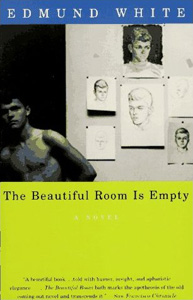This article relies largely or entirely on a single source .(August 2024) |
 Cover of the Vintage Books edition | |
| Author | Edmund White |
|---|---|
| Language | English |
| Genre | Autobiographical novel |
| Publisher | Alfred A. Knopf |
Publication date | 1988 |
| Publication place | United States |
| Media type | Print (Hardback & Paperback) |
| Pages | 227 pp |
| ISBN | 0-394-56444-8 |
| OCLC | 17325874 |
| 813/.54 19 | |
| LC Class | PS3573.H463 B43 1988 |
The Beautiful Room Is Empty is a 1988 semi-autobiographical novel by Edmund White. [1]
It is the second of a trilogy of novels, being preceded by A Boy's Own Story (1982) and followed by The Farewell Symphony (1997). It depicts the adolescence and early adulthood of its protagonist, and documents his experience of homosexuality in the 1950s and 1960s, ending with the Stonewall riots of 1969.